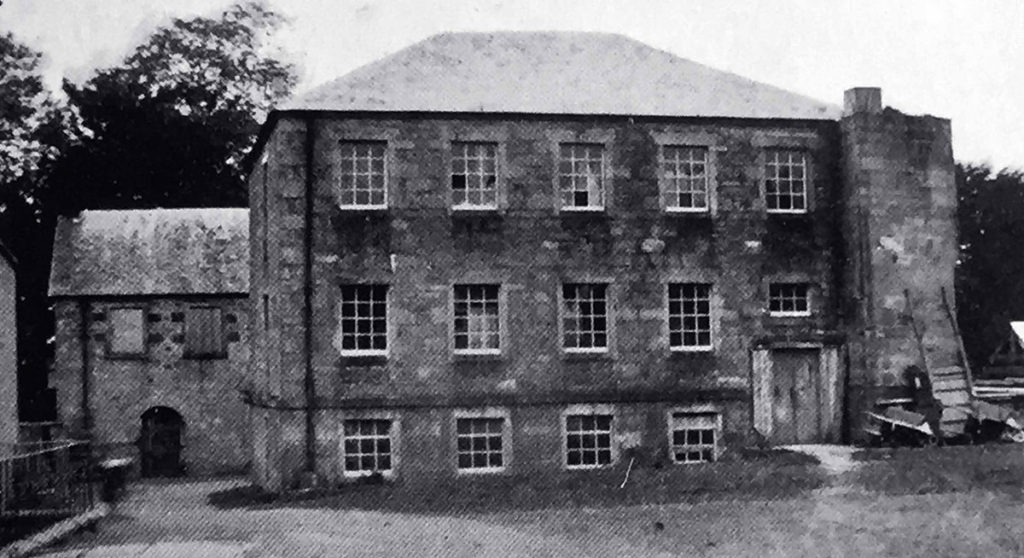Fintry Past
Fintry Cotton Mill
The Mill Owner
The original Fintry village was around the Church area or Clachan of Fintry. Fintry was formed where it is today as the Newton (or new town) of Fintry, when the mill arrived.
Alexander Spiers bought Culcreuch castle for £15,000 in 1769 and gave it to his son, Peter, who began the plan to build a new Fintry.
Between 1770 and 1800 Spiers invested in huge changes for Fintry. The spinning and weaving mill was erected.

Roads for the Mill
Spiers worked with Robert Dunmore of Ballindalloch who was developing a cotton mill in Balfron. They both needed to get the raw cotton in and the finished product out quickly over the hills to the east end of Glasgow. So together they paid for the remarkable upgrading of the Crow Road, the toll road from Fintry to Lennoxtown.
Before their work it was rough cattle-droving track. It had a gradient of 1 in 6 and only half a cart load could be pulled by a struggling horse. Their engineering investment opened Fintry to the world.
In 1837 the company went into liquidation following competition from steam in Glasgow. It was bought over and new approaches worked it in reduced capacity until it folded around 1864.

Construction and Work
he only bridge over the river Endrick had been General Wade’s bridge up at the Gonachan, a mile east of the church. Now a magnificent new bridge was created on the Kippen Road. A whole village of new workers houses was constructed along Main Street. Around 200 skilled workers were brought from the mills at Dewsbury in Yorkshire to live in these houses and work the mill’s 20,000 spindles, with 260 workers.
The mill was to be powered by water. The water began at Loch Walton, 5 miles up in the eastern hills towards Loch Carron. Spiers built a dam at Loch Walton, then another dam at Craigton. The water’s speed and quantity was carefully controlled through a lade with sluice gates down to a water wheel at the mill.
Homes
The worker’s houses were small and held families of 6 in separate top and bottom flats. The population rose from 550 in 1780 to over 1,000 around 1800.
There were 5 shops and 5 pubs at this time.

